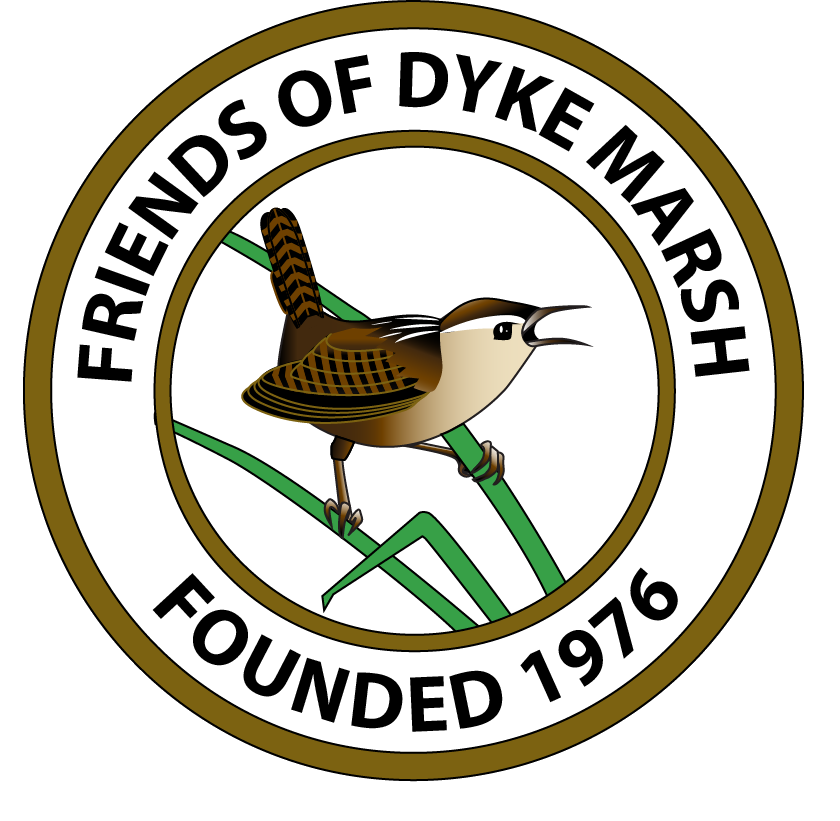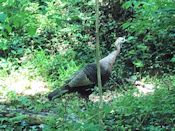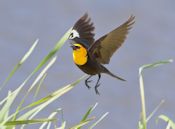Virginia U.S. Senator Mark Warner came to Belle Haven Park/Dyke Marsh on June 22, 2020 and championed the Senate’s June 19 approval of the Great American Outdoors Act. The bill would fully and permanently fund the Land and Water Conservation Fund (LWCF) at $900 million a year and allocate $9.5 billion to address the maintenance backlog on public lands, including national parks, refuges, U.S forests and other lands. The National Park Service has a $12 billion maintenance backlog; Virginia parks, $1.1 billion; the George Washington Memorial Parkway, $717 million.
In late May, several people observed a wild turkey (Meleagris gallopavo) on and near the Haul Road trail. Our FODM breeding bird survey leader Larry Cartwright reported on May 29, 2022, “A hen wild turkey strolled down the path near the Haul Road entrance. The turkey was icing on the cake.”
The next day, FODMer Ed Eder snapped a photo and speculated, “The well-fed turkey is probably consuming a lot of insects in the native planting area.” On May 30, 2022, Leila Saldanha took several photos of “our” turkey.
Several talented photographers documented breeding birds in Dyke Marsh this spring, 2020.
Many people have enjoyed warblers migrating through Dyke Marsh this spring, 2020. Many species have bright colors. Some migrate from South America to northern Canada.
Keen observers have watched the parents and two young barred owls (Strix varia) in Dyke Marsh this spring, 2020. Ed Eder captured the two owlets doing mutual preening on April 17 and Ed reported that they usually stick close together.
Barred owls are known for their haunting, baritone night call, “who cooks for you, who cooks for you-all.” They get their name from their “bars” or striped plumage. Generally, they roost during the day and hunt at night. Adults are around 21 inches in length and a little over a pound in weight. They tend to be in older forests, but are highly adaptable to varied habitats, including mixed forests and disturbed areas. “Barred owls are the opportunists of the owl world,” wrote Leigh Clavez in The Hidden Lives of Owls.
Dyke Marsh has had another first this spring, 2020 -- several sightings of a yellow-headed blackbird (Xanthocephalus xanthocephalus). In fact, it is a record for the George Washington Memorial Parkway according to Brent Steury, the Parkway’s Natural Resources Program Manager.
The beautiful blackbird in Dyke Marsh is a male with a stunning yellow head, black body, yellow breast and white markings on its wings. Females and immature males are brown-black with reduced yellow on the face, throat and brow. These birds typically nest in the West and Midwest in colonies, often alongside red-winged blackbirds in bullrushes or cattails. They forage on insects, grain and wet seeds.







